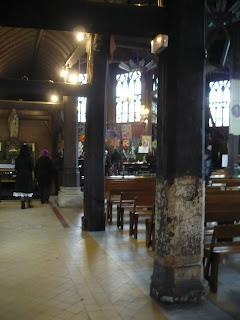The next two blogs are written as how-to’s. It boggle my mind how complicated some things are when you travel. Buying a car is a big event whether you are at home so it follows that it will be a bit more complicated when traveling. Here’s how we did it.
Steps to Buy a Car
1. Search internet sites for used car in England.
a. Discover no left-hand drive cars for sale nearby.
2. Decide to wait until France for more choice.
3. Search internet sites for used car in Paris.
a. Discover car outside of Paris
4. Practice French questions in head.
5. Leave apartment to make phone call on street because phones have no reception in apartment building.
6. Call Used Car salesman.
a. Discover number will not ring through.
7. Ask passerby for assistance.
a. Discover you must drop numbers in front in order to place call.
8. Dial number for Used Car salesman.
a. Discover he speaks English and determine car has been sold but another car is there
9. Use internet to locate Used Car Lot
a. Write down directions to walk from train station to Lot.
10. Take metro, transfer to train, walk.
a. Discover walking directions don’t work
11. Ask passerby for help
a. Locate map in garbage can and work out new route
12. Spend two hours discussing car and what can and cannot be done in France
a. Discover we need address in France to buy a car
i. Salesman offers to use his address
b. Discover car will be ready to test drive the next day
i. Agree to return next day
c. Discover must pay cash
i. Decide to pull out maximum allowable on both cards and Visa over a few days to cover amount
13. Return home and withdraw money.
14. Next day, withdraw money, take transit and then walk to Used Car Lot
15. Test drive car and agree to buy it.
a. Discover France requires special papers be submitted to police before purchasing but Salesman can do that.
16. Give copy of passport to Salesman.
17. Give Salesman money and agree to come back in two days after paperwork is complete and rest of money is available.
18. Withdraw money next day and travel out of Paris to Chartres.
19. Call Salesman to confirm all paperwork is in order and car is ready for pickup.
20. Take train, metro.
21. Stop in Paris to withdraw rest of money.
22. Get back on metro.
a. Discover that while one ticket is still good, the other has mysteriously expired.
23. Walk to next train station using map in head and signs along road.
24. Take train and then walk to Used Car Lot.
25. Complete paperwork transaction.
26. Drive together to buy insurance for car to avoid high premium monthly insurance at Car Lot.
a. Discover insurance will cost over 1000 Euros for year and only one year may be purchased.
27. Return to Car Lot to buy monthly insurance from Salesman who agrees to sell it to us at his rate and forego the profit he would normally get.
a. Discover only three months can be bought at a time.
i. Buy three months and then postdate the next three months
28. Discover paperwork for transfer of car will be sent to Salesman’s address but we need to keep it with the car.
a. Decide salesman will call when papers arrive and will pick them up in our name and then forward them to us in Provence in several weeks.
29. Travel north to Rouen.
30. Travel west to Cabourg.
31. Receive call from Salesman that papers have arrived after a few days.
a. Discover post office must forward them to us and he may not claim them.
32. Look for address of house. Find all but postal code and with no internet connection it will be impossible to get code. No one answers phone number we have for emergencies.
33. Call Salesman back with address and he agrees to get postal code. Must put our name on mailbox in front to help postman.
34. Look for mailbox.
a. Discover we have one but it needs a key.

35. Find keys.
a. Discover we have the key for the mailbox and there is A LOT of mail.
36. Discover postal code 25 times over.
37. Receive call from Salesman to confirm postal code.
38. Wait two days to sign for mail from a postlady to receive ownership papers.











 We've seen a play in 'Vienna Opera House'
We've seen a play in 'Vienna Opera House'


























